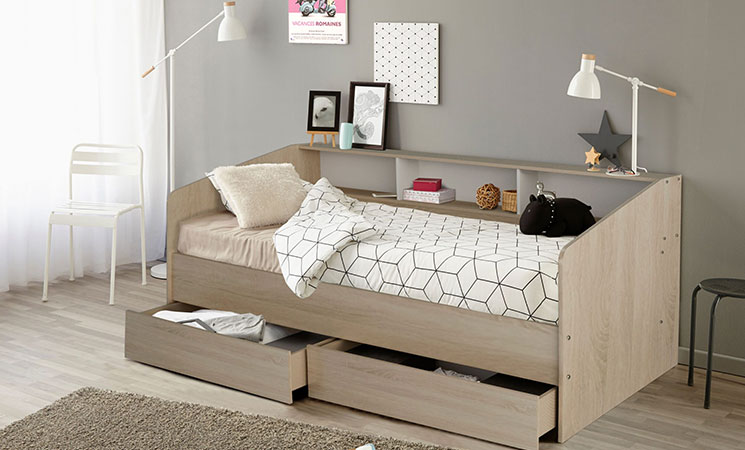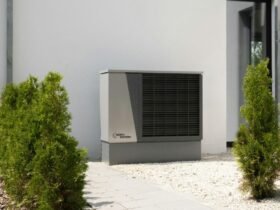Choosing the right bed for a child’s room can be a challenging task. Two popular options that often come up are cabin beds and bunk beds. While they may seem similar at first glance, these two types of beds have distinct differences in design and functionality.
The main difference between a cabin bed and a bunk bed lies in their structure and purpose. A cabin bed features a single elevated sleeping area with usable space underneath, which can be utilized for storage, study, or play. Bunk beds, on the other hand, consist of two or more stacked sleeping areas, maximizing vertical space in a room.
Cabin beds offer versatility and are ideal for children who need extra floor space. They come in various designs, including elegant cabin beds that can enhance a room’s aesthetics. Bunk beds are perfect for shared rooms or sleepovers, providing multiple sleeping surfaces without taking up additional floor area. Both options have their unique advantages, catering to different needs and preferences.
Key Takeaways
- Cabin beds have one elevated sleeping area with usable space below
- Bunk beds feature stacked sleeping areas for multiple occupants
- Both bed types maximize room space but serve different purposes
Understanding Cabin Beds and Bunk Beds
Cabin beds and bunk beds offer space-saving solutions for bedrooms, each with unique features and benefits. These bed types cater to different needs and preferences, providing versatile options for various living spaces.
Definition and Types
Cabin beds are elevated single beds with functional space underneath, typically used for storage, study areas, or play zones. They stand around 20 inches or higher off the ground. Cabin beds come in various styles, including those with built-in desks, shelves, or drawers.
Bunk beds consist of two or more beds stacked vertically. Common types include:
- Standard bunk beds (two beds)
- Triple bunk beds (three beds)
- L-shaped bunk beds
- Twin over full bunk beds
- Futon bunk beds
- Trundle bunk beds
Materials for both cabin and bunk beds typically include wood or metal, each offering distinct aesthetics and durability.
Key Differences
The main distinction between cabin beds and bunk beds lies in their structure and purpose. Cabin beds focus on maximizing floor space with a single elevated sleeping area, while bunk beds prioritize multiple sleeping surfaces.
Cabin beds:
- Single sleeping surface
- Lower height (easier access for younger children)
- More storage options
- Often include built-in furniture elements
Bunk beds:
- Multiple sleeping surfaces
- Higher overall structure
- Less integrated storage
- Suitable for shared rooms or frequent guests
Usage Scenarios
Cabin beds excel in rooms where floor space is limited but only one sleeping area is needed. They’re ideal for children’s rooms, providing a fun elevated bed with practical storage or study areas underneath. The lower height makes them suitable for younger children or those who prefer easier bed access.
Bunk beds shine in shared bedrooms, vacation homes, or spaces that frequently host guests. They accommodate multiple sleepers in a compact footprint, making them perfect for siblings sharing a room or maximizing sleeping capacity in small areas. L-shaped and futon bunk beds offer additional versatility, combining sleeping and seating functions.
Both bed types contribute to space-saving bedroom designs, but the choice depends on specific needs, room layout, and the number of people needing sleeping accommodations.
Design Features and Practical Considerations
Cabin beds and bunk beds offer distinct design elements and functional considerations. Their structures, materials, and styles impact space utilization, safety, and overall room aesthetics.
Storage and Space Utilization
Cabin beds excel in storage options. Many models feature built-in drawers, shelves, or cupboards beneath the sleeping area. This design maximizes floor space, creating an efficient layout for small rooms.
Some cabin beds incorporate desks or study spaces underneath, ideal for children’s bedrooms. The area can also serve as a cozy reading nook or play zone.
Bunk beds prioritize sleeping capacity over storage. They accommodate two or more sleepers vertically, making them perfect for siblings sharing a room or guest spaces.
Loft-style bunk beds offer versatility. The space under the top bunk can house a desk, dresser, or additional storage units.
Materials and Durability
Wood and metal are common materials for both bed types. Solid wood frames provide a sturdy, long-lasting option with a classic appearance. Pine and oak are popular choices.
Metal frames offer durability and a sleek look. They’re often lighter than wood, making them easier to move or reconfigure.
High-quality materials ensure bed longevity. Robust construction is crucial, especially for bunk beds that bear more weight.
Finishes vary from natural wood stains to painted surfaces. Some manufacturers offer customizable options to match room decor.
Safety and Comfort
Safety is paramount, particularly for bunk beds. Guard rails on upper bunks prevent falls. Secure ladders or steps provide safe access to top levels.
Cabin beds, being lower, pose fewer safety concerns. However, raised edges or partial rails can offer peace of mind for younger children.
Both bed types should meet safety standards for stability and weight capacity. Regular checks for loose bolts or worn parts are essential.
Comfort features include quality mattresses and adequate headroom. Bunk beds require careful mattress selection to ensure proper fit within safety rails.
Design Styles
Cabin beds come in various styles. Treehouse-inspired designs appeal to younger children, while sleek, minimalist options suit older kids or guest rooms.
Bunk beds range from basic frames to elaborate setups. L-shaped configurations maximize corner spaces. Some feature slides or climbing walls for added fun.
Rustic wooden bunk beds complement country or cabin-themed rooms. Industrial-style metal frames fit modern, urban aesthetics.
Custom designs allow for unique features like built-in lighting, privacy curtains, or themed decorations. These personalized touches create memorable sleeping spaces for children and adults alike.
Conclusion
Cabin beds and bunk beds offer distinct space-saving solutions for bedrooms. Cabin beds provide a single elevated sleeping area with functional space underneath for storage, desks, or play areas. Bunk beds stack two or more beds vertically to maximize sleeping capacity. The choice between them depends on specific needs – cabin beds excel in versatility, while bunk beds accommodate multiple sleepers efficiently.













